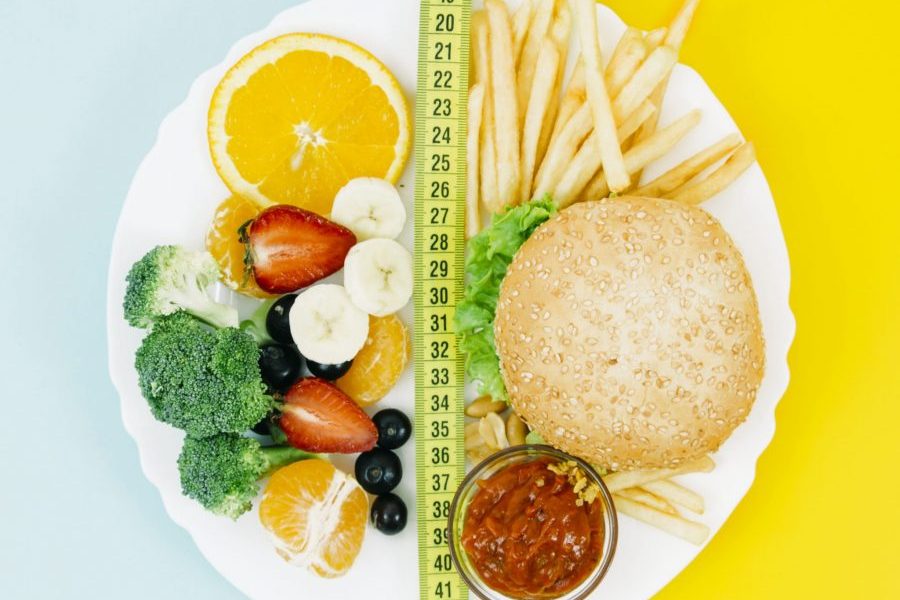Fifteen years ago, as a bright-eyed newly graduated dietitian, you would have walked into my office or attended one of my group sessions and I would have been all about the numbers. I would have given you so many numbers that by the end of the session you would barely remember your own birth date, let alone how many “grams of sugar” per serve (or was it per 100g?) that was “acceptable”.
Then, I would have printed you out a lovely business card sized label reading cheat sheet to keep in your wallet so that you could check the milligrams of salt, grams of fats and know how many teaspoons of sugar you can have. Did that make things more or less confusing? I’m not sure. Because when you are at the supermarket, tired from spending the last two hours reading labels, and wondering if you should choose product A: with slightly more salt (of course they don’t call it salt, they call it sodium) but less saturated fat and more fibre. Or Product B: with more sugar but less total fat, however, product A is 150g serve and product B is 200g yet you are probably going to eat the whole packet, not even my lovely label reading cheat sheet will save you. Because my friend, food in our modern world has become darn complicated.
Food is more than numbers!
Then about halfway into my career, I started to realise that food is more than numbers. That health is much much more than numbers on the scales. That people eat for a range of reasons and that the numbers can start to negatively rule your life. Those little label reading cards went in the trash.
So if you were in one of my sessions around five years ago, I would have told you to forget the labels, eat what you feel. But this advice can also be hard to comprehend. Does health not matter anymore? And what if I want to know the healthier option, as I like both these products and would like to chose the healthier one. Plus, even though I’m no longer numbers obsessed and more focused on people having a healthy relationship with food, Australians could improve nutrition to have more energy to do the things they love.
Today I want to empower people to listen to their bodies, to think about nutrition and intuition when eating. To have the nutrition knowledge to know what is ‘healthy’ (for them) but also be in tune with their own body to think about which foods will satisfy them. To think about the foods they are eating most, and not get too fixated on the “sometimes” foods.
And for me these days, I rarely read a label (unless I am cooking for someone with an allergy or intolerance).
The Foost guide to reading labels (without becoming obsessed with them)
Remember the only times you actually NEED to read the labels is for medical conditions (allergies, intolerances, small babies, certain diseases etc).
1. Enjoy food that doesn’t have packaging (no label to read)
Namely Vegetables and fruit (written in that order intentionally). Start your shop in the fruit and veggie section. Check you have a variety of colours. But if we ate only fruits and vegetables our diets wouldn’t be balanced so here is what to do with other products (plus in the modern world, packaged products can be super helpful).
2. Choose wholegrain
When you can. And if there is a choice and you enjoy the product, choose brown with wholegrains. These products are higher in fibre (which feeds our healthy gut bacteria and keep our insides healthy) and also keep us fuller for longer.
3. Ignore the health claims on the front of the pack
The claims on the front of packaging are more about marketing than information. Of course, if you are coeliac or have a nut allergy, use this information. But if you are not, a product being gluten-free is not necessarily healthier for you. Sugar-free products can be higher in other ‘sugars’ instead. Or they might claim per serve when you would eat more than one serve (often a package is multiple serves but most people would eat the package or tub). The term ‘natural’ has no legal constraints meaning it can be used freely.
4. Read the ingredients list
Try reading the ingredients list first (not the box of numbers). Ideally, it is not too long and you can understand the words. The ingredients list should be like a list of ingredients as if you were making it at home (see below for an explanation of ingredients). Ingredients lists are written in order of the greatest amount of ingredients to lowest. So concentrate on looking at the top five ingredients in the list.
5. Choose what you will enjoy more
If one product is slightly healthier but the other product you like the flavour more, choose flavour! (unless there is a medical condition). Eat slowly and enjoy. You are more likely to enjoy the food more and therefore get satisfied sooner.
6. If you’re comparing two products you eat frequently and equally enjoy, look for:
Ideally go for the product with less sodium, more fibre, less saturated fats, less trans fat, and less sugar. Compare products per hundred grams (just in case the per serves is different on the different products).
7. Don’t obsess
If there is a product you really love but it doesn’t fit the above criteria, don’t worry. Everything in moderation, including moderation itself. Read labels to make informed decisions but don’t let them dictate your life or food choices.
In Summary…choosing food is hard. Label reading is confusing (even for me after four years of university and 15 years of working in the field). It is not an exact science. Plus there are other factors many of us consider when choosing food including environmental sustainability, food miles, and animal welfare.
We are constantly being marketed to by companies, bombarded by messages in the media and on social media. And we have to try and break through all this information and work out how we want to feed ourselves and our families.
Good luck 🙂
Label-reading glossary (empowering you to make choices)
Many additives can be sensitive to certain individuals. However, most are safe in moderate amounts to most of us. On the internet, you hear lots of scary claims about additives that are not backed up by research. Always check the credentials of the people making these claims.
Ingredients that sound scary but aren’t:
- Ascorbic acid (vitamin C) – Used as a preservative
- Thiamin, Riboflavin, Folate (B vitamins that give us energy) – These are added to many products (mainly bread) to prevent population deficiencies
- Anti-caking agent aka cellulose aka n.406 – Found in grated cheese and stops cheese sticking together
Additives to reduce (as easy alternatives are available, don’t obsess about a little):
- Sodium Nitrate and nitrate – found in process meats. A natural version is available, but remember processed meats are still high in salt so this is a healthier not healthiest alternative)
Additives that some people may be sensitive to:
- MSG (Monosaturated Glutimate) – It’s a flavour enhancer. Some people can be sensitive to it but most people are fine in moderation
- Sulphur and sulphur dioxide. Found commonly in dried fruit. It can affect people with asthma
Other names for added sugar: Honey, High Fructose Corn Syrup, Maple Syrup, Fructose, Glucose, Sucrose, Agave nectar, molasses, caramel, Fruit juice concentrate, coconut sugar, Barley malt, Brown rice syrup, Corn syrup, Corn syrup solids, Dextrin, Dextrose, Diastatic malt, Ethyl maltol, Glucose, Glucose solids, Lactose, Malt Syrup, Maltodextrin, Maltose, Rice Syrup
Names for artificial sweeteners: aspartame,
Other names for salt: Sodium, Sodium Chloride










